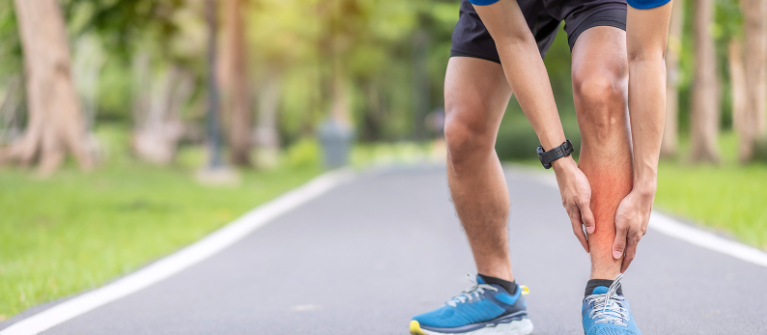
If you’ve ever suddenly gotten back into an exercise routine, feeling good about making the leap and getting your steps in or working up a sweat, and then woken up the next day having to hobble everywhere because of the pain in your shins, then you aren’t alone! In fact, even the most experienced of athletes can develop this kind of pain that we call shin splints.
What Are Shin Splints?
The term “shin splints” refers to pain along the tibia when the surrounding muscles, tendons, and bone tissue become inflamed and irritated from repetitive, vigorous, or altered exercising. Shin splints are not a serious injury, initially, which is good considering how many people develop this particular condition. Those who are particularly prone to shin splints are:
- Women
- Those with flat feet
- Those with rigid arches
- Inexperienced exercisers
- Dancers
- Runners
- Military members
If shin splints are left unaddressed and are continued to be irritated, there is a chance that they can escalate into detached muscles or stress fractures, but those are extreme cases. Stress fractures, tendinitis, and chronic exertional compartment syndrome are all conditions associated with shin pain, so it’s suggested that a doctor become involved if the pain persists. Shin splints usually heal completely within 2-6 weeks, depending on the severity and how much rest you allow yourself, but pain will usually subside within a week.
How Do You Prevent Shin Splints:
1. Stretch
Having a warm-up and stretch routine before you get into the heat of your workout will allow your muscles time to loosen up and get ready to support you as you exercise! Everyone from first-time exercisers to children to professional athletes should have some method of stretching incorporated to keep these types of preventable injuries away. If you know your workout is going to be different, make sure your stretching session is a little bit longer and more comprehensive!
2. Wear Proper Footwear
Improper or worn-down footwear can have a very large impact on your risk of getting shin splints, for runners especially. Don’t know when to replace your sports gear? Check out our overview here! Worn-out shoes can displace your weight and put stress on parts of the body that aren’t supposed to be stressed or aren’t prepared to be stressed. This is why shin splints develop if your regiment changes suddenly, like running hills and trails or switching from a treadmill to a sidewalk, as well!
3. Don’t Overexert Yourself
Once we get it in our heads that we’re going to stick to a schedule and not deviate from it, backing off when it starts to get painful can feel like a failure and be very disappointing and disheartening. But that’s not the case! Taking care of your body so that you can train better and longer is just as important as the exercises themselves. Especially for newer exercisers, or those who are just getting back into exercising, this can be difficult, since it throws off a still-developing schedule. Slowly ease into a regiment instead of starting at 100% to prevent any overexertion injuries and get yourself an accountability buddy if you have to take a break because of an injury.
4. Crosstrain
One of the simplest ways to make sure that you aren’t neglecting a part of your body and setting it up for injury is by cross-training your muscles. This can look different for everyone, but just like a weight-lifter wouldn’t only do arm workouts, or only build the muscles in their legs, every exerciser can benefit from working on all parts of their body. Swimming, cycling, and using machines such as the elliptical are all great cardio alternatives to each other.
How to Treat Shin Splints:
Shin splints is a variable condition that affects each person differently – it’s highly dependent on what you do that caused the shin splints and how you respond. As mentioned before, pain can go away in as short as a week’s time, but that doesn’t mean that the injury isn’t still there. Make sure you have total and complete painless motion back before returning fully to your sport or exercise regiment so that you don’t end up re-injured or making your injury worse.
All the popular methods of rest and recovery apply to mild cases of shin splints:
- RICE – Rest, Ice, Compression, Elevation
- Over-the-Counter pain medication
- Decrease your activity
If the pain persists, physical therapy, stabilizing boots, orthopedic inserts, or crutches may be utilized to take the pressure off the injured leg and allow proper healing.
If you or someone you love has suffered a sports injury in the Louisville, Kentucky-area, board certified sports medicine physician Dr. Stacie Grossfeld at Orthopaedic Specialists PLLC can help. Orthopaedic Specialists PLLC is accepting new patients, and same day appointments are available. For additional information or to schedule an appointment, please contact Orthopaedic Specialists PLLC today at 502-212-2663.

Recent Comments